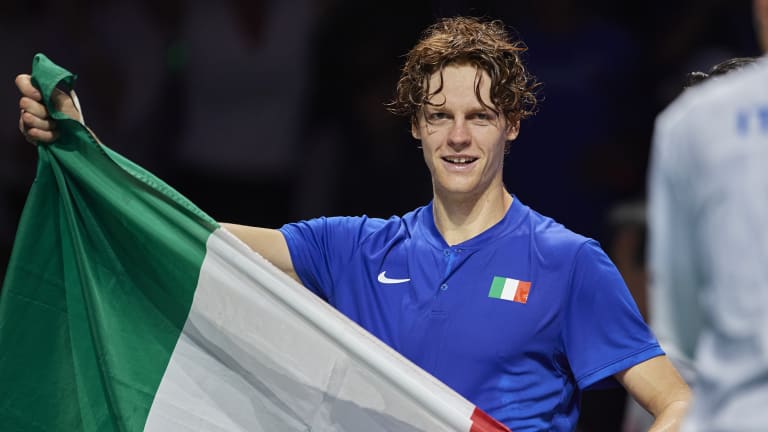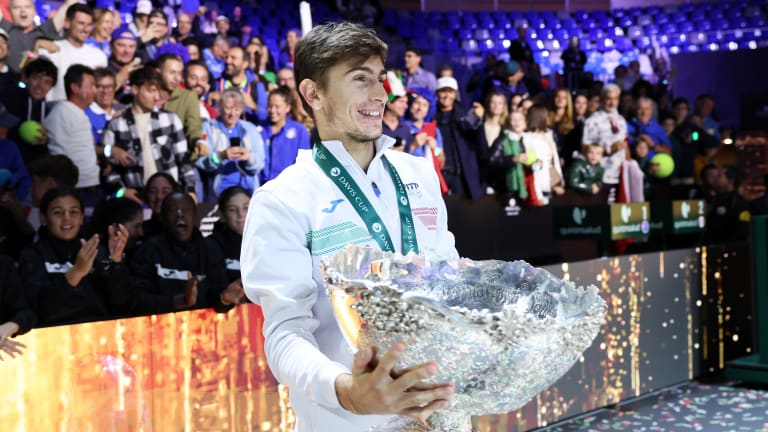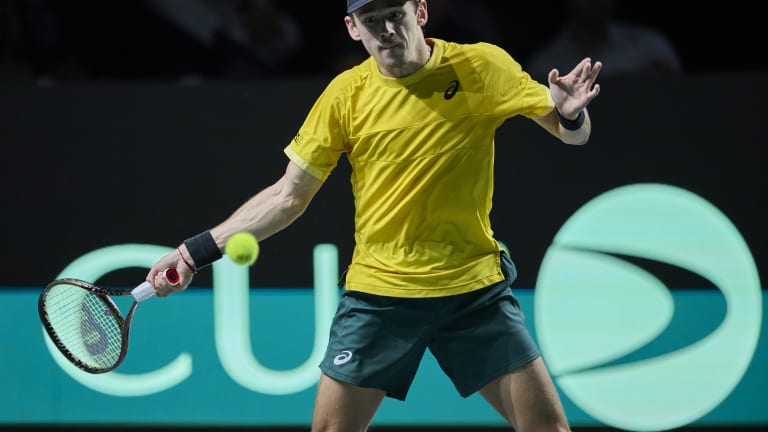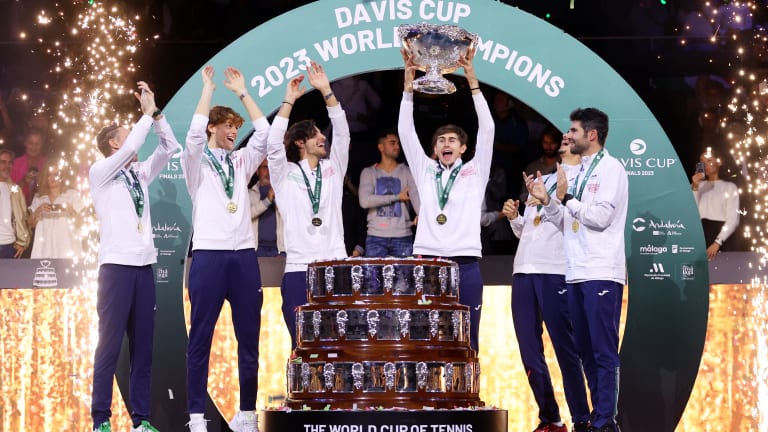Davis Cup Finals
After Davis Cup heroics, what might 2024 hold for a rapidly-ascending Jannik Sinner?
By Nov 26, 2023Davis Cup Finals
With "heavy heart," Carlos Alcaraz withdraws from Davis Cup Finals with hamstring injury
By Nov 18, 2025Davis Cup Finals
Fresh off US Open title, Jannik Sinner cheers on as Italy completes dominant Davis Cup week
By Sep 15, 2024Davis Cup Finals
Jannik Sinner leads Italy to its first Davis Cup title in nearly 50 years
By Nov 26, 2023Davis Cup Finals
Davis Cup Final 8: Finland gets defending champion Canada; Serbia to face Great Britain
By Sep 19, 2023Davis Cup Finals
Great Britain and Italy secure their places in Davis Cup Final 8
By Sep 17, 2023Davis Cup Finals
The Davis Cup, Refilled: As Finland stuns U.S., national pride still rules
By Sep 17, 2023Davis Cup Finals
Canada beats Italy to start Davis Cup title defense; Jack Draper's debut help Great Britain to win
By Sep 13, 2023Davis Cup Finals
Rajeev Ram and Austin Krajicek lead U.S. Davis Cup team to thrilling 2-1 opening win over Croatia in Split
By Sep 13, 2023Davis Cup Finals
Ugo Humbert beats Stan Wawrinka to clinch France's win over Switzerland at Davis Cup Finals
By Sep 12, 2023After Davis Cup heroics, what might 2024 hold for a rapidly-ascending Jannik Sinner?
Sinner has accomplished too much in 2023 to consider his Davis Cup heroics simply an arrival moment. Call it instead, a precipice moment.
Published Nov 26, 2023
Advertising

Sinner went unbeaten in Malaga to help Italy to its first Davis Cup in nearly 50 years.
© Francisco Macia/Photo Players Images
Advertising

No. 44 Arnaldi, 22, overcame nerves to win a two-and-a-half hour opener vs. Alexei Popyrin.
© Getty Images for ITF
Advertising

"He's seriously impressive, the level he's showing," said de Minaur of Sinner.
© Francisco Macia/Photo Players Images
Advertising

If Sinner is on the precipice, so too is Davis Cup—where does the competition go from here?
© Getty Images for ITF